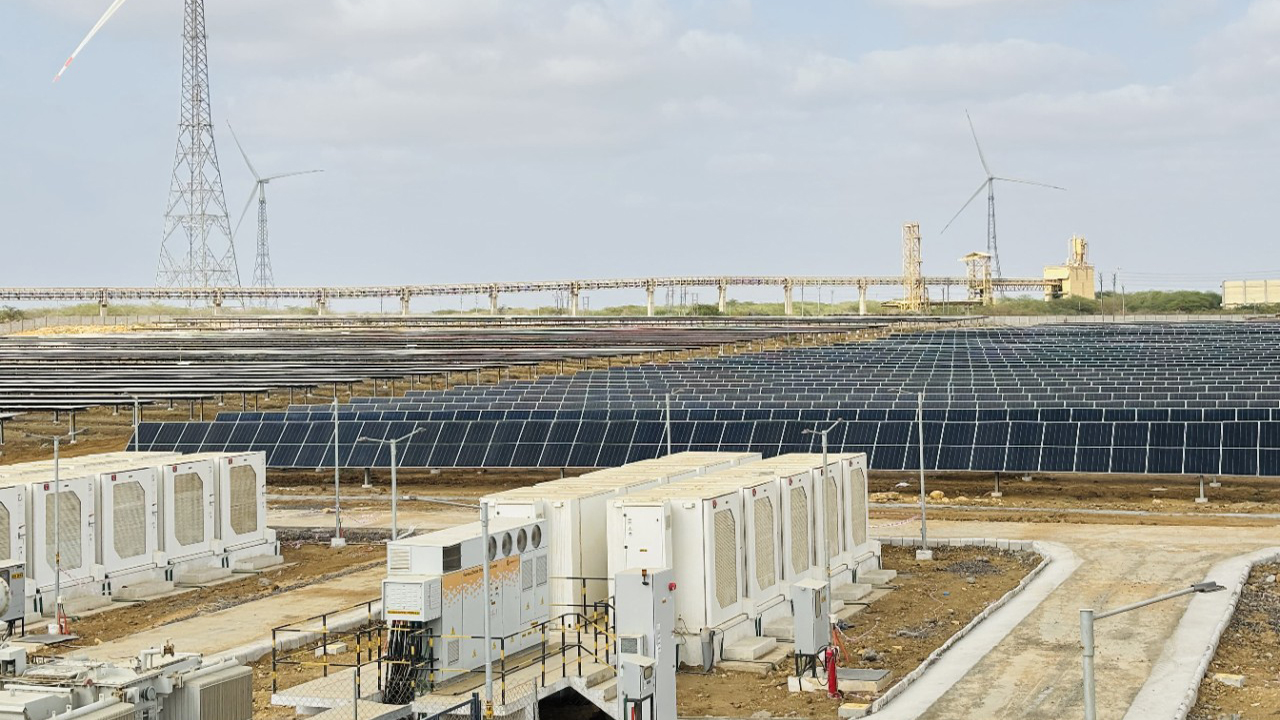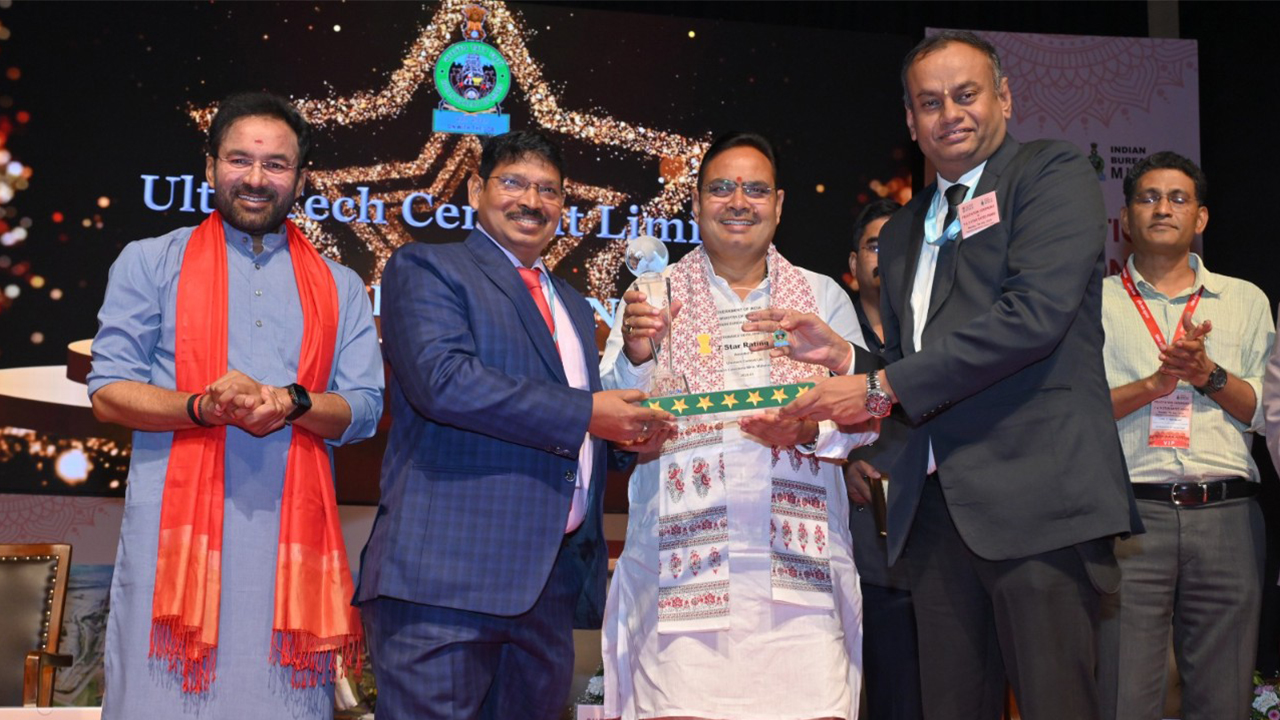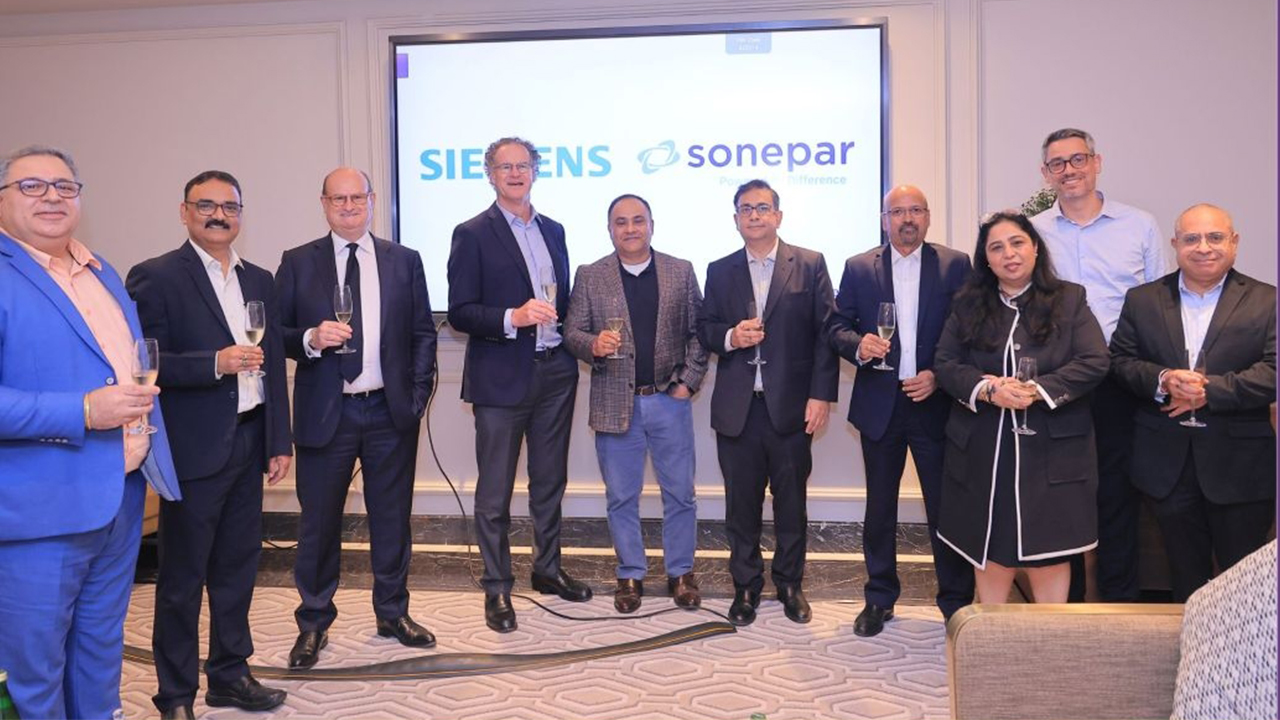Some of the top industry leaders got together and shared their insights on leveraging digital technologies to boost energy efficiency, to enhance reliability, to ensure safety, to improve the packaging process and to reduce carbon emissions in the cement manufacturing industry at a virtual event organized by Pro MFG Media recently.
June 2023: The Frinks.ai presents Leadership Think Turf on ‘Cementing the Future - Digitalization in Cement Manufacturing’ powered by Pro MFG Media was a grand success with the participation of several cement industry stalwarts. The virtual event was supported by the MeitY - Nasscom Centre of Excellence, IIT Indore Drishti CPS foundation and IIT Hyderabad. Esteemed panellists, who shared their insights, included Chetan Shrivastav, Executive Director- Manufacturing, Dalmia Cement Bharat, Nikhil Chaturvedi, EVP & Global CDO, JSW Group, Ganesh Tripathy, SVP - Manufacturing Excellence & RMX Operation, Nuvoco Vistas, Manoranjan Kumar, CIO, Shree Cement, Vamsee Mohan Kanneganti, GM IT & CRM, Penna Cement, Mandar Desai, Partner, KPMG, and Rajesh Shankar, Unit Head, Ultratech Cement. The discussion was moderated by Manish Kulkarni, Director & Co-founder, Pro MFG Media. Here’s a quick overview capturing the key insights of all speakers.
The context for the discussion was set by Aditya Agarwal, Co-founder, Frinks AI, through his insightful opening remarks. He highlighted that by embracing cutting edge technologies, the cement manufacturing companies can address some of the key challenges (high energy costs, emissions, low profit margins & opaque processes), enhance productivity, and position themselves for long term success in an increasingly competitive and environmentally conscious market. “At Frinks AI we are very proud to contribute to the digital transformation of the cement industry. Despite the growing potential of AI, its use for solving operational challenges remains very limited. Our mission is to close this gap by providing a platform tailored to the manufacturer’s specific need, allowing for effortless adaption, scaling and value generation,” Mr. Agarwal shared.
Chetan Shrivastav, Executive Director-Manufacturing, Dalmia Cement Bharat, pointed out that over the last five or six years, data from various operations of the cement industry has been continuously analysed. “But now, it is mostly converted into artificial intelligence and machine learning. Earlier the kiln operation was done very efficiently by some trained or competent operators but now it is totally being done by AI solutions. Many companies are now also using green fuels for their operations. These green fuels also come with their own share of variables which cannot be analysed using the conventional methods. Again, in this case, digital technology is playing an important role by analysing the data, sending it to the operators and then using it in terms of communication between machine to machine leading to better efficiency in terms of combustion,” Mr. Shrivastav remarked. He also added that the Indian cement industry is the most innovative cement industry in the world and digital is playing a key role in this. “Right from mining till the time the product is handed over to the customer, we are using digital technologies,” he stated.
Rajesh Shankar, Unit Head, Ultratech Cement, said that the most pertinent advice he ever came across in the cement industry is that it all depends upon the way you burn your fuel; whether you burn your pockets or not! “I think that summarises the cement industry for me because fuel is something like 60 percent or 70 percent of the cost. So, the better you burn it, the better your efficiency, the more sustainable you are, and the lesser your carbon footprint!
In terms of digitalization, the major change that has happened is that we have removed the human from that central control room. Now, AI or machine learning itself controls the entire thing. So, in terms of the response time, in terms of the accuracy of the response, things are much, much better at this point of time. And that is probably leading to a better landscape,” Mr. Shankar explained.
Mandar Desai, Partner, KPMG, highlighted that ESG as a concept has started picking up only in the last few years. “I started working in the cement industry back in 2011, when people used to worry about the energy mainly from the consumption and the cost point of view, if not worrying too much about the carbon footprint. So, the priorities are changing fast and of course apart from cost. The organizations are also focusing on the carbon footprint, they are getting aware of the economic impact on the environment. I think the focus is changing because concrete is the second most used substance by human beings after water, which means that any small savings we are getting over there and a small impact we are making is going to go a long way in making that impact,” Mr. Desai added.
Ganesh Tripathy, SVP - Manufacturing Excellence & RMX Operation, Nuvoco Vistas, pointed out how his organization is using Total Productive Maintenance (TPM), as a part of the manufacturing excellence journey. “We are basically focusing on AM (Autonomous Maintenance) and PM (Planned Maintenance), which are basically TPM tools. Earlier we used to collect the data related to AM and PM through excel sheets. We used to get huge excel sheets for analysis. But now, we are putting it as part of our SAP. In this process, we are collecting the data from different plants under the PQCDSM (Productivity, Quality, Cost, Delivery, Safety and Morale) score and analysing it. We are also creating dashboards for different operational people so that they can take timely and correct actions. Due to this system, the reporting has been reduced and the dashboards are helping us with online analysis,” he elaborated. Mr. Tripathy also shared that his organization had recently started one pilot project using AR (augmented reality) glass for sourcing and monitoring. “Then, we are also using drones for inspecting the inside of the kiln. Overall, I can say that digitalization is an interesting journey and it is benefitting every part of our business operation,” he informed.
Nikhil Chaturvedi, EVP & Global CDO, JSW Group, mentioned that his organization has done several successful predictive maintenance projects that have helped a lot. “And when I am talking about these projects, it’s not only from the JSW Cement point of view, but we have several other businesses that are into asset intensive industries,” he said. Explaining what would constitute the playbook for successfully doing asset performance management, he underlined that it’s very important to do asset prioritization. “Because for large companies you have multiple plants and every plant has multiple units with every unit having multiple equipment. So, how do we prioritize them? From the criticality point of view? From the value point of view? Or from the negative points of equipment failure. All of them need to be taken into account to do this predictive maintenance projects and set up time improvement projects from critical assets point of view. Then secondly, there are several important building blocks which we need to take care of. Some of our cement plants are really aging and there we don’t have enough automation. The first step for us is to complete automation in the plant so that we can get data in a systematic and in a structured manner. Then, subsequent to that, we need to do data ingestion, through integration etc.
A lot of times I have noticed that the companies who provide predictive maintenance solutions do not have the experience in integration with SAP plant maintenance. It’s very important to integrate the data with SAP plant maintenance in order to implement these asset uptime improvement initiatives,” Mr. Chaturvedi elaborated.
Manoranjan Kumar, CIO, Shree Cement, agreed with Mr. Chaturvedi and said that it is indeed important to prioritize the assets. “We have implemented around 25,000 IoT tags in the plant. The data from these tags comes to us through an informative dashboard. The dashboard gives you a good picture of the trends, plant operations as well as information about which equipment is going to fail at what time. It tells you what is the utilization of the particular equipment in the plant? How do you compare the productivity of one plant with another plant? This dashboard gives us the real picture and real time data. But we have not yet integrated it with ERP, that journey is still on. We are sure that once we are able to complete the integration then it will give us better results.”
Vamsee Mohan Kanneganti, GM IT & CRM, Penna Cement, that his organization has first identified the low hanging fruit which – at a basic minimum – is completing digitization. “Wherever there is manual work or paperwork or manual moving of data from system to system, we have digitized that be it sales and marketing, logistics, or procurement. Then we move to digitalizing transaction-based operations by users. After that, we work on the next level of digital collaboration like having a single source of truth instead of having multiple islands for communication. We have also worked on reducing the number of digital interfaces so that users can use the minimum number of systems. The last thing that we have worked on is advanced reporting and analytics. There’s always been a very complex kind of an initiative, because of so many stakeholders involved, be it the data, data readiness, the departments, or the systems.
I never expected that there would be change management issues in the IT system, where people are just holding on to the earlier systems because they are used to it because they are insecure. So, that was also a challenge, but we worked on it by doing everything in a phased manner, we also understood what is our appetite for change and accordingly our planned change management strategy,” Mr. Kanneganti explained.
Overall, the Frinks.ai presents Leadership Think Turf on ‘Cementing the Future - Digitalization in Cement Manufacturing’ powered by Pro MFG Media successfully generated valuable insights across key areas of the cement manufacturing industry including leveraging digital technologies to improve energy efficiency and reduce carbon emissions in cement manufacturing, implementing remote monitoring and predictive maintenance systems to minimize downtime and increase asset productivity, digitalization of planning, scheduling, and monitoring of packaging material using latest technologies, and overcoming barriers to digital adoption in the cement industry, including legacy systems and cultural resistance.
NEWSLETTER
TRENDING ON PRO MFG
MORE FROM THE SECTION









